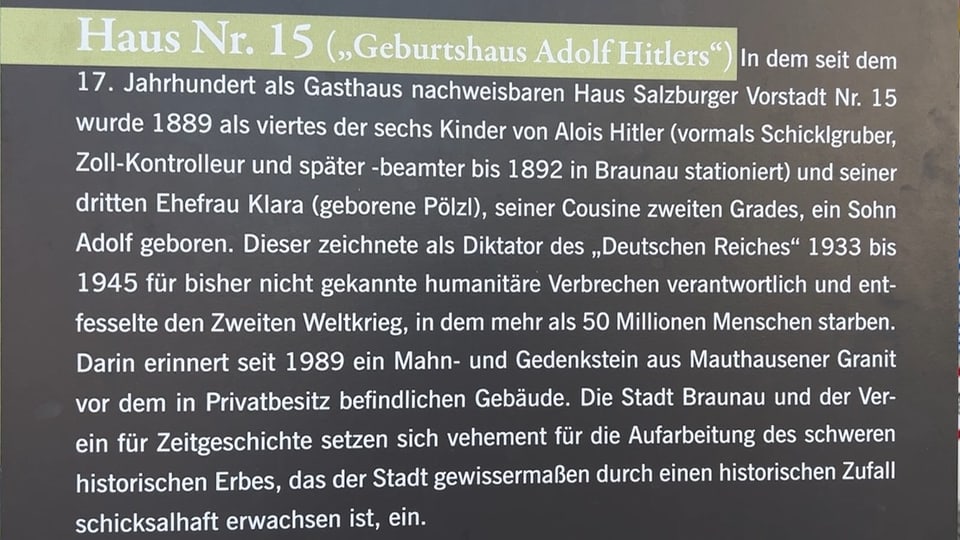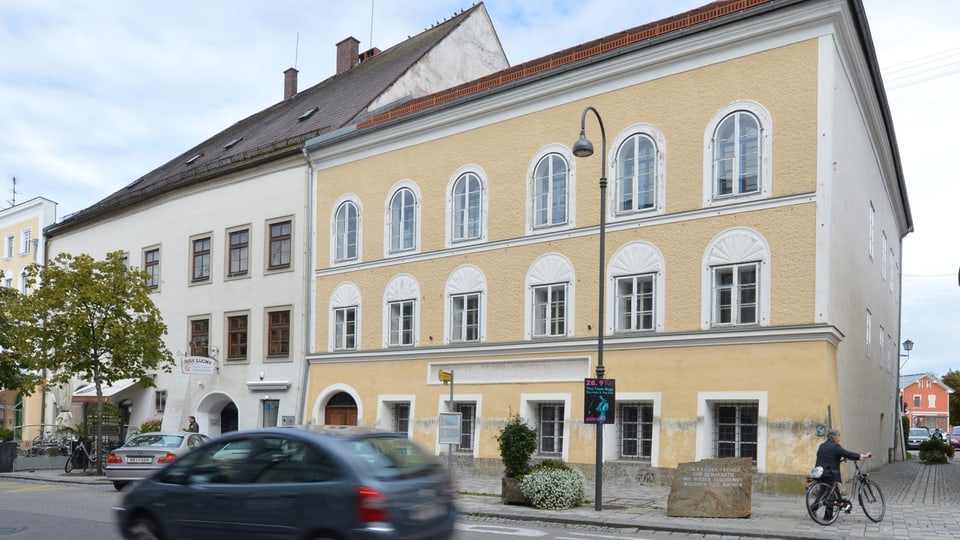Contents
The police are supposed to move into Adolf Hitler’s birthplace. A new documentary criticizes this approach.
For decades there has been an argument in Austria about what to do with Adolf Hitler’s birthplace. In 2016, the then Interior Minister announced that it would be demolished. The house was then expropriated to prevent it from falling into the wrong hands.
Legend:
The documentary “Who’s Afraid of Braunau?” revisits the eventful history and present of Hitler’s birthplace.
Keystone/Kerstin Joensson
Shortly afterwards, the demolition decision was overturned and the renovation was planned with the intention of allowing people with cognitive impairments to move in. This May there was another about-face: not the disabled, but the police should move in.
Commission: The cult of worship must be broken
The interdisciplinary commission that discussed the future of the Hitler House decided: “The cult of worship and the mythology surrounding the person of Adolf Hitler by right-wing extremists – some of whom travel to Braunau to Hitler’s birthplace specifically for this purpose – must be permanently broken. The best way to achieve this goal is to involve the police.
We should open the doors to our past, especially our perpetrator past. And that’s why this house has to be open.
But the new documentary “Who’s Afraid of Braunau?” raises doubts. Director Günter Schwaiger says: “Without comparing the police of today with those under National Socialism, it is a bad symbol. Because of the past and the police’s involvement in National Socialist crimes.”
How to deal with the building?
In addition, this would mean that the house would be closed to the population. “That’s exactly what we shouldn’t do. We should open the doors to our past, especially our perpetrator past. And that’s why this house has to be open.”
Schwaiger’s film shows the problems in the house without pointing fingers. He describes how the people of Braunau have been trying to get along with the unloved Hitler house for decades.
The Nazis once changed the facade of the house. Now this is to be changed again as part of the 20 million euro renovation. For director Schwaiger, this is absurd: “The idea behind this is to erase every memory of Adolf Hitler in this house. People try to change the façade and believe that this is a way of coming to terms with history. But changing the facade and not what’s behind it has been happening in Austria for far too long.”

Legend:
In the house, writings remind us of the background of the building.
SRF
Schwaiger’s documentary also reveals that with the arrival of the police, Adolf Hitler’s will was fulfilled, so to speak. The Braunau historian Florian Kotanko found a newspaper article from 1939 in which Hitler expressly wanted state employees to work in the house where he was born. It literally says: “It is his wish to convert it into offices for the district management.”
This is also why, according to a new survey by the Braunau initiative “Diskurs Hitlerhaus”, only six percent of all people surveyed in Austria are in favor of the police moving into Hitler’s birthplace.
Günter Schwaiger is therefore convinced that the police will never move in. “If such a large majority is against it, then we should urgently think about whether this decision is the right one for the future.”
